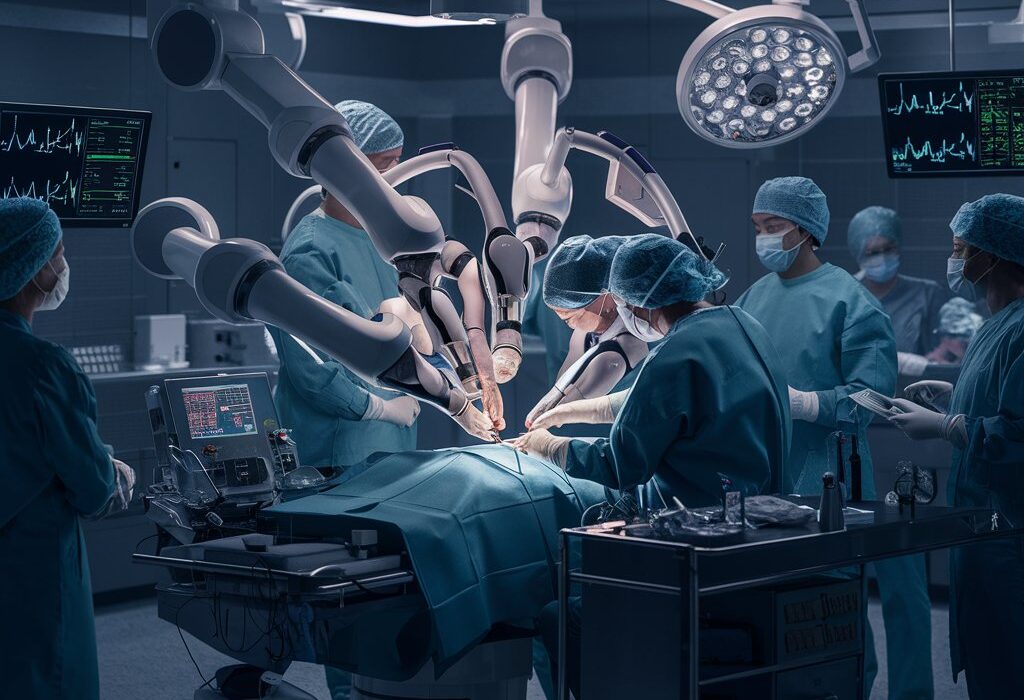Maintaining a healthy diet is essential for your overall well-being. The food you consume directly impacts your physical and mental health, energy levels, and even your long-term quality of life. Adopting healthy eating habits can help you achieve and maintain a healthy weight, reduce the risk of chronic diseases, and improve your overall sense of well-being.
Proper nutrition supports the proper functioning of your body’s systems, from the cardiovascular system to the digestive system and beyond. Eating a balanced diet rich in essential nutrients can boost your immune system, promote healthy skin and hair, and even enhance your cognitive function.
Furthermore, healthy eating habits can have a profound impact on your mood and mental health. When you fuel your body with nutritious foods, you’re more likely to experience stable energy levels, improved focus, and a more positive outlook on life.
Benefits of Maintaining a Healthy Diet
Incorporating healthy eating habits into your lifestyle can provide a wide range of benefits, including:
- Weight Management: A balanced diet and portion control can help you achieve and maintain a healthy weight, reducing the risk of obesity and related health issues.
- Reduced Risk of Chronic Diseases: A diet rich in fruits, vegetables, whole grains, and lean proteins can lower your risk of developing conditions such as heart disease, type 2 diabetes, and certain types of cancer.
- Improved Digestive Health: Consuming a fiber-rich diet and staying hydrated can promote regular bowel movements, reduce the risk of constipation, and support overall gut health.
- Increased Energy Levels: Nutrient-dense foods provide your body with the necessary fuel to function at its best, helping you feel more energized and alert throughout the day.
- Enhanced Cognitive Function: A diet that includes omega-3 fatty acids, antioxidants, and other brain-boosting nutrients can improve memory, concentration, and overall cognitive performance.
- Better Mood and Mental Well-being: Proper nutrition can positively impact your mood, reducing the risk of depression, anxiety, and other mental health concerns.Get more information check sophie raiin.
The Impact of Unhealthy Eating Habits on Your Body
Adopting an unhealthy diet can have significant negative consequences on your physical and mental health. Consuming a diet high in processed foods, saturated fats, added sugars, and excessive calories can lead to:
- Weight gain and obesity
- Increased risk of heart disease, high blood pressure, and stroke
- Type 2 diabetes and insulin resistance
- Digestive issues such as bloating, constipation, and heartburn
- Decreased energy levels and fatigue
- Weakened immune system and increased susceptibility to illness
- Poor sleep quality and disrupted circadian rhythms
- Mood disorders, such as depression and anxiety
- Cognitive decline and impaired memory and focus
Recognizing the negative impact of unhealthy eating habits is the first step towards making positive changes and improving your overall well-being.
Understanding the Basics of a Balanced Diet
A balanced diet is the foundation of a healthy lifestyle. It consists of a variety of nutrient-dense foods from the following food groups:
- Fruits and Vegetables: Aim for a variety of colorful fruits and vegetables, which are rich in vitamins, minerals, fiber, and antioxidants.
- Whole Grains: Choose whole-grain options, such as brown rice, quinoa, and whole-wheat bread, to ensure you’re getting the full benefits of complex carbohydrates.
- Lean Proteins: Incorporate lean protein sources, such as poultry, fish, legumes, and tofu, to support muscle growth and repair.
- Healthy Fats: Include healthy fats from sources like avocados, nuts, seeds, and olive oil, which are essential for brain health and hormone regulation.
- Dairy or Dairy Alternatives: Opt for low-fat or non-fat dairy products, or choose dairy alternatives like almond or soy milk, to meet your calcium and vitamin D needs.
Balancing these food groups and paying attention to portion sizes is key to maintaining a healthy and sustainable diet.
Tips for Incorporating Healthy Eating Habits Into Your Daily Routine
Adopting healthy eating habits doesn’t have to be overwhelming. Here are some practical tips to help you incorporate them into your daily life:
- Plan and Prepare Meals: Set aside time each week to plan your meals and prepare healthy snacks and meals in advance. This can help you make better food choices and avoid the temptation of unhealthy options.
- Increase Fruit and Vegetable Intake: Make it a goal to include a variety of fruits and vegetables in every meal and snack. Aim for at least five servings per day.
- Hydrate Regularly: Stay hydrated by drinking plenty of water throughout the day. Avoid sugary beverages and limit your intake of caffeinated drinks.
- Mindful Eating: Slow down and savor your meals, paying attention to your body’s hunger and fullness cues. This can help you avoid overeating and make more conscious food choices.
- Limit Processed and Fast Foods: Minimize your consumption of highly processed, high-sodium, and high-sugar foods, which can negatively impact your health.
- Incorporate Whole Grains: Choose whole-grain options, such as brown rice, quinoa, and whole-wheat bread, to increase your fiber and nutrient intake.
- Practice Portion Control: Be mindful of your portion sizes, as overeating, even of healthy foods, can lead to weight gain and other health issues.
- Experiment with New Recipes: Explore new, healthy recipes that incorporate a variety of nutrient-dense ingredients. This can help you discover new favorite foods and keep your meals interesting.
- Involve the Whole Family: Encourage your family to adopt healthy eating habits together. This can make the transition easier and more enjoyable for everyone.
- Stay Consistent and Patient: Changing your eating habits takes time and effort. Be patient with yourself and focus on making gradual, sustainable changes that you can maintain in the long run.
The Role of Portion Control in Maintaining a Healthy Lifestyle
Portion control is a crucial aspect of a healthy diet. Eating the right amount of food for your individual needs can help you achieve and maintain a healthy weight, regulate your blood sugar levels, and prevent overeating.
To practice effective portion control, start by familiarizing yourself with standard serving sizes for different food groups. Use visual cues, such as the size of your palm or a standard measuring cup, to help you estimate appropriate portions. Pay attention to your body’s hunger and fullness signals, and stop eating when you feel satisfied, rather than full.
Incorporating strategies like using smaller plates, sharing meals, and being mindful of snacking habits can also help you maintain healthy portion sizes. Additionally, learning to read and understand nutrition labels can provide valuable information about the calorie and nutrient content of the foods you consume.
Remember, portion control is not about depriving yourself, but rather about finding a balanced and sustainable approach to eating that supports your overall health and well-being.
Healthy Alternatives to Common Unhealthy Foods
Swapping out unhealthy food choices with nutritious alternatives can be a game-changer in your journey towards a healthier lifestyle. Here are some examples of healthy substitutions:
| Unhealthy Food |
Healthy Alternative |
| White bread |
Whole-grain bread or sprouted bread |
| Sugary cereal |
Oatmeal or quinoa-based cereal |
| Fried chips |
Baked vegetable chips or roasted nuts |
| Soda |
Sparkling water or unsweetened herbal tea |
| Candy |
Dark chocolate or fresh fruit |
| Processed snacks |
Homemade trail mix or fresh vegetable sticks |
| Red meat |
Lean poultry or plant-based protein sources |
| Butter |
Avocado or olive oil |
By making these simple swaps, you can gradually reduce your intake of unhealthy fats, added sugars, and refined carbohydrates, while increasing your consumption of fiber, vitamins, and minerals.
Meal Planning and Prepping for Success
Effective meal planning and preparation are essential for maintaining healthy eating habits. Set aside time each week to plan your meals, make a grocery list, and prepare healthy ingredients in advance. This can help you:
- Ensure Balanced Nutrition: By planning your meals, you can ensure that you’re consuming a variety of nutrient-dense foods and meeting your daily nutritional needs.
- Save Time and Money: Meal prepping can reduce the time and effort required to prepare healthy meals, saving you from the temptation of ordering takeout or buying unhealthy convenience foods.
- Reduce Stress and Improve Consistency: Having a plan in place can help you avoid the last-minute scramble to find something to eat, making it easier to stick to your healthy eating habits.
- Minimize Food Waste: Meal planning and prepping can help you better utilize the ingredients you have on hand, reducing food waste and saving you money in the long run.
To get started, try these tips:
- Make a weekly meal plan based on your schedule and dietary needs.
- Prepare components of your meals in advance, such as chopping vegetables, cooking grains, or making sauces.
- Invest in reusable containers and storage solutions to make meal prep and storage easier.
- Experiment with batch cooking or freezer-friendly meals to save time on busier days.
- Involve your family or roommates in the meal planning and prepping process to make it a shared responsibility.
How to Stay Motivated and Committed to Healthy Eating Habits
Maintaining healthy eating habits can be challenging, especially in the face of busy schedules, social pressures, and the abundance of tempting, unhealthy food options. Here are some strategies to help you stay motivated and committed to your healthy eating goals:
- Set Achievable Goals: Break down your overall health and wellness objectives into smaller, measurable goals that are specific, attainable, and time-bound. This can help you track your progress and stay motivated.
- Find Enjoyment in the Process: Experiment with new, healthy recipes and explore different cuisines to keep your meals interesting and enjoyable. Celebrate your successes, no matter how small.
- Surround Yourself with Support: Enlist the help of friends, family, or a healthcare professional to hold you accountable and provide encouragement along the way.
- Manage Stress and Practice Self-care: Incorporate stress-management techniques, such as meditation, yoga, or simply taking breaks, to prevent emotional eating and maintain your healthy habits.
- Allow for Flexibility and Balance: Recognize that occasional indulgences or deviations from your plan are normal and acceptable. Focus on maintaining an overall healthy lifestyle, rather than perfection.
- Celebrate Non-Scale Victories: Pay attention to how your body and mind feel, not just the number on the scale. Celebrate improvements in energy, mood, and overall well-being.
- Continuously Educate Yourself: Stay informed about the latest research and best practices in nutrition and healthy living. This can help you make more informed decisions and stay motivated.
By implementing these strategies, you can cultivate a positive, sustainable mindset towards healthy eating and maintain your commitment to a better lifestyle.
Seeking Professional Help and Support for Healthy Eating
If you’re struggling to develop or maintain healthy eating habits, don’t hesitate to seek professional support. Consulting with a registered dietitian or a qualified healthcare provider can provide you with personalized guidance and resources to help you achieve your health and wellness goals.
A registered dietitian can work with you to:
- Assess your current dietary intake and nutritional needs
- Develop a personalized meal plan that aligns with your health objectives
- Provide practical tips and strategies for making sustainable dietary changes
- Offer support and accountability throughout your journey
- Address any underlying medical or psychological factors that may be impacting your eating habits
In addition to working with a dietitian, you may also benefit from joining a support group or participating in a structured program focused on healthy eating and lifestyle changes. These resources can provide you with a community of like-minded individuals, additional education, and the motivation to stay on track.
Remember, seeking professional help is a sign of strength, not weakness. By taking this step, you’re investing in your long-term health and well-being, which can have a profound impact on your quality of life.
Conclusion
Adopting healthy eating habits is a transformative journey that can lead to a more vibrant, fulfilling, and balanced lifestyle. By understanding the importance of proper nutrition, incorporating practical strategies, and seeking support when needed, you can unlock a world of benefits for your physical, mental, and emotional well-being.
Remember, healthy eating is not about perfection or deprivation; it’s about finding a sustainable approach that nourishes your body, mind, and soul. Embrace the process, celebrate your successes, and be patient with yourself as you navigate the ups and downs of this rewarding journey.
Ready to take the first step towards a healthier, happier you? Schedule a consultation with a registered dietitian today to create a personalized plan that will help you achieve your wellness goals. Together, we can unlock the power of healthy eating habits and unlock a better lifestyle. Contact us now to get started! Read more visit valentinamidgetox.
















